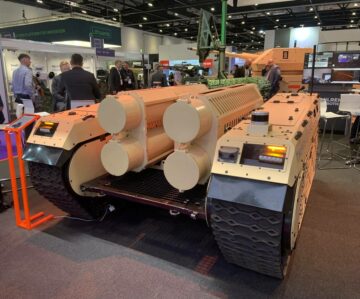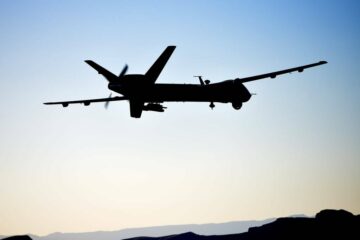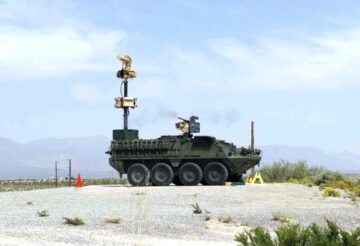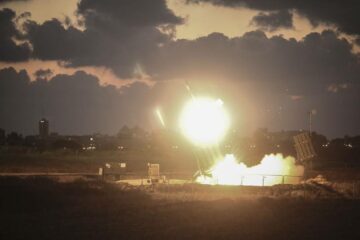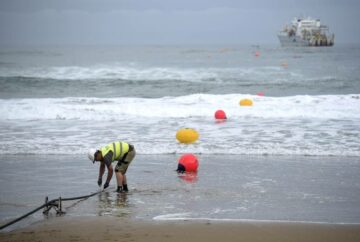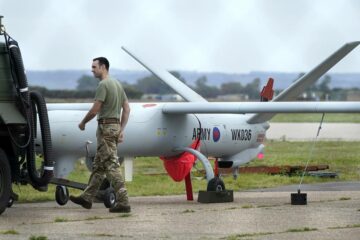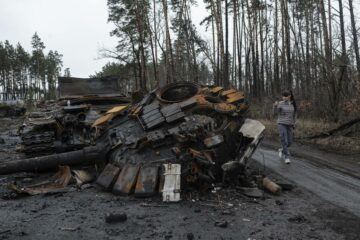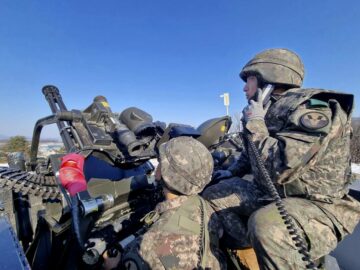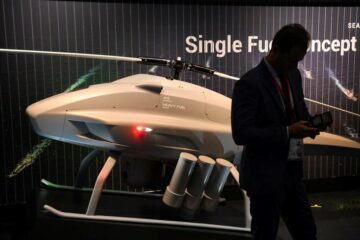NATIONAL HARBOR, Md. — Northrop Grumman said it finished building its prototype of the Manta Ray underwater drone, devised for assignments that demand long hours and extended ranges while minimizing human involvement.
The Virginia-based defense contractor teased a photo of the novel unmanned underwater vehicle, or UUV, on April 8, coinciding with the first day of the Navy League’s Sea-Air-Space conference in Maryland. The image — darkened along the edges and sporting a sparse backdrop — shows its glider-like body and a rounded nose. Little can be seen of its tail, and its dimensions are unclear.
The Defense Advanced Research Projects Agency in 2020 kicked off the Manta Ray program with the thought of creating a large underwater drone that can operate independently of manned vessels and ports once underway. DARPA later tapped Northrop and PacMar Technologies to design and build preliminary versions.
“At Northrop Grumman, we’re creating a new type of unmanned underwater vehicle,” Todd Leavitt, a company executive, said in a statement at the time. “Our design can carry large payloads over long distances without the need for maintenance or refueling.”
RELATED
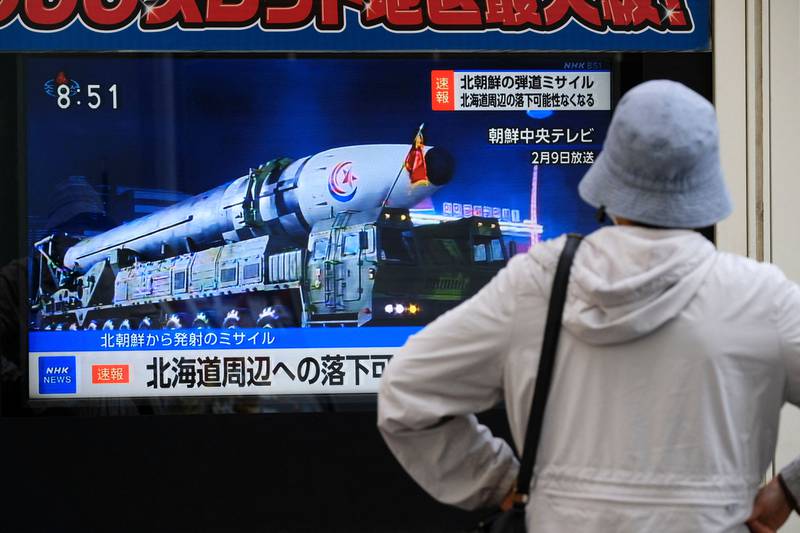
The U.S. military is increasingly interested in uncrewed technologies and their battlefield application. The Navy is seeking to establish a so-called hybrid fleet, augmenting sailors and Marines with smart machinery and their specialty equipment. Defense News previously reported the service was maturing its manned-unmanned teams in three phases: prototyping and experimenting from fiscal 2024 to 2028; buying and using in fiscal 2029 through 2033; and becoming fully operational in the years thereafter.
Key considerations for Manta Ray development include communication capabilities, high-efficiency propulsion systems and low-power means of threat detection and classification. Having a drone that can survive on its own for protracted periods of time would reduce logistical demands and free up manpower.
Northrop is the third-largest defense contractor in the world when ranked by defense-related revenue. The company earned $32.4 billion in 2022, according to Defense News Top 100 analysis.
Colin Demarest is a reporter at C4ISRNET, where he covers military networks, cyber and IT. Colin previously covered the Department of Energy and its National Nuclear Security Administration — namely Cold War cleanup and nuclear weapons development — for a daily newspaper in South Carolina. Colin is also an award-winning photographer.
- SEO Powered Content & PR Distribution. Get Amplified Today.
- PlatoData.Network Vertical Generative Ai. Empower Yourself. Access Here.
- PlatoAiStream. Web3 Intelligence. Knowledge Amplified. Access Here.
- PlatoESG. Carbon, CleanTech, Energy, Environment, Solar, Waste Management. Access Here.
- PlatoHealth. Biotech and Clinical Trials Intelligence. Access Here.
- Source: https://www.defensenews.com/unmanned/2024/04/09/northrop-completes-manta-ray-underwater-drone-prototype/
- :is
- :where
- $UP
- 1
- 100
- 11
- 2020
- 2022
- 2024
- 2028
- 4
- 5
- 70
- 8
- 800
- a
- According
- administration
- advanced
- agency
- along
- also
- an
- analysis
- and
- Application
- April
- ARE
- assignments
- At
- award-winning
- backdrop
- Battlefield
- BE
- becoming
- Billion
- body
- Breaking
- breaking news
- Broadcasting
- build
- Building
- Buying
- by
- CAN
- capabilities
- Carolina
- carry
- classification
- cold
- Communication
- company
- Completes
- Conference
- considerations
- Contractor
- covered
- covers
- Creating
- cyber
- daily
- darpa
- day
- Defense
- Defense Advanced Research Projects Agency
- Demand
- demands
- Department
- Department of Energy
- Design
- Detection
- Development
- devised
- dimensions
- drone
- earned
- edges
- energy
- equipment
- establish
- Ether (ETH)
- executive
- experimenting
- extended
- false
- finished
- First
- Fiscal
- FLEET
- For
- Free
- from
- fully
- harbor
- having
- he
- HOURS
- http
- HTTPS
- human
- Hybrid
- image
- images
- in
- include
- increasingly
- independently
- interested
- involvement
- IT
- ITS
- Japan
- jpg
- Korean
- large
- later
- launch
- little
- Long
- machinery
- maintenance
- Maryland
- means
- Military
- minimizing
- namely
- National
- Need
- networks
- New
- news
- North
- nose
- novel
- nuclear
- Nuclear weapons
- of
- off
- on
- once
- operate
- operational
- or
- over
- own
- periods
- phases
- photo
- photographer
- plato
- Plato Data Intelligence
- PlatoData
- ports
- preliminary
- previously
- Program
- projects
- propulsion
- prototype
- prototyping
- ranges
- ranked
- RAY
- reduce
- Refueling
- Reported
- reporter
- research
- revenue
- s
- Said
- Screen
- security
- seeking
- seen
- service
- Shows
- smart
- South
- South carolina
- sparse
- Specialty
- sporting
- Statement
- survive
- Systems
- Tapped
- teams
- teased
- Technologies
- television
- that
- The
- the world
- their
- thought
- threat
- threat detection
- three
- Through
- time
- to
- tokyo
- top
- type
- u.s.
- unclear
- underwater
- Underway
- using
- vehicle
- versions
- vessels
- war
- was
- watches
- Weapons
- when
- while
- with
- without
- woman
- world
- would
- years
- zephyrnet

